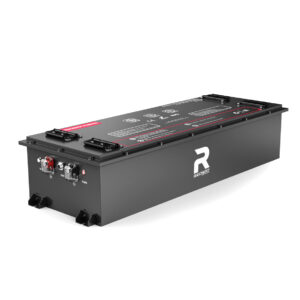What Are the Key Drivers Behind EV Battery Market Growth?
The EV battery market is growing rapidly due to rising electric vehicle adoption, government incentives, and advancements in lithium-ion technology. Key drivers include declining battery costs, sustainability mandates, and investments in solid-state and recyclable battery systems. By 2030, the market is projected to exceed $150 billion, fueled by demand in Asia-Pacific and Europe.
How Is Lithium-Ion Technology Dominating the EV Battery Market?
Lithium-ion batteries dominate due to their high energy density, longer lifespan, and falling prices (below $100/kWh in 2023). Innovations like nickel-rich cathodes and silicon anodes enhance performance. Major automakers like Tesla and BYD rely on lithium-ion, which holds over 80% market share. However, supply chain constraints for lithium and cobalt pose challenges.
What are the different types of golf cart batteries?
Recent advancements in cathode chemistry have enabled lithium-ion batteries to achieve energy densities exceeding 300 Wh/kg, making them ideal for long-range vehicles. Manufacturers are also adopting dry electrode coating techniques that reduce production costs by 15-20%. The table below shows key lithium-ion battery components and their development focus:
| Component | Innovation | Impact |
|---|---|---|
| Cathode | High-nickel NMC | +20% energy density |
| Anode | Silicon blending | 30% faster charging |
| Electrolyte | Solid additives | Improved thermal stability |

Why Are Solid-State Batteries Considered the Future of EVs?
Solid-state batteries promise higher energy density (500 Wh/kg), faster charging, and improved safety by replacing liquid electrolytes. Toyota and QuantumScape aim for commercialization by 2025. These batteries could extend EV range to 800+ miles per charge. However, high production costs and scalability hurdles delay mass adoption until 2030.
How can you responsibly recycle golf cart batteries?
The transition to solid-state technology requires complete reengineering of manufacturing processes. Current prototypes show exceptional performance in lab conditions but face durability issues in real-world temperature variations. Automakers are forming strategic partnerships – BMW collaborates with Solid Power, while Nissan plans to open a pilot production line in 2024. The table below compares key battery technologies:
| Parameter | Lithium-Ion | Solid-State |
|---|---|---|
| Energy Density | 250-300 Wh/kg | 400-500 Wh/kg |
| Charging Time | 30-40 mins (10-80%) | 12-15 mins (10-80%) |
| Projected Cost (2030) | $75/kWh | $90/kWh |
Expert Views
“The EV battery sector is at an inflection point,” says Dr. Elena Torres, a Redway battery technologist. “Solid-state breakthroughs and recycling innovations will redefine supply chains. However, achieving cost parity with fossil fuels requires scaling new chemistries and addressing geopolitical risks in raw material sourcing. Collaboration between automakers and miners is critical to sustain growth.”
News
China’s CATL and Sinopec Plan to Build 10,000 Battery Swap Stations
In April 2025, Chinese battery manufacturer CATL announced a strategic partnership with state-owned oil company Sinopec to construct 10,000 battery swap stations. This initiative aims to address range limitations and promote electric vehicle adoption, significantly impacting the EV battery market.
BYD Surpasses Tesla in Q1 2025 EV Deliveries
In March 2025, BYD reported delivering 371,419 passenger vehicles, including 166,109 fully electric models. This performance led to a first-quarter total of 416,388 battery electric vehicle sales, surpassing Tesla’s estimated 378,000 deliveries for the same period. BYD’s growth reflects increasing consumer demand and advancements in battery technology.
Solid-State Batteries Poised for Commercial Production
Solid-state batteries, known for enhanced safety and energy density, are nearing commercial production. Samsung SDI aims to begin production by 2027, while LG Energy Solution plans to mass-produce two types of solid-state batteries starting in 2026 and 2030, respectively. These developments could significantly influence the EV battery market by offering longer driving ranges and improved safety.
FAQs
- How Long Do EV Batteries Typically Last?
- Most EV batteries last 8–15 years or 100,000–200,000 miles, depending on usage and climate. Manufacturers like Tesla offer 8-year/150,000-mile warranties. Degradation rates average 2-3% annually.
- Are EV Batteries Environmentally Friendly?
- While production emits CO2, EVs offset emissions within 18 months of driving. Recycling and renewable-powered gigafactories improve sustainability, reducing overall impact by 60% compared to ICE vehicles.
- Which Companies Lead the EV Battery Market?
- CATL (34% market share), LG Energy Solution, and Panasonic dominate. Tesla’s 4680 cells and BYD’s Blade batteries are disruptive. Startups like Northvolt and Sila Nanotechnologies gain traction with silicon anode tech.
